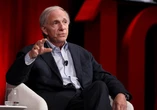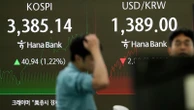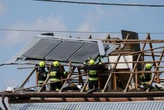The aftermath of the assassination of Charlie Kirk in Orem, Utah, has been a maelstrom of misinformation and hatred, revealing how polarized social media and the past decade of digital conflict have left us. One of the most unsettling signs that something fundamental has broken in our sense of reality comes from a seemingly trivial detail: Donald Trump’s pinky finger.
In a White House statement mourning Kirk’s death, many viewers focused less on the president’s words than on the video itself. The high-contrast footage was scrutinized for evidence that it had been manipulated by artificial intelligence, and some viewers claimed they found undeniable proof.
At one point in the clip, Trump’s left pinky finger appears to merge with the others as he clasps his hands on the desk. Conspiracy theorists have seized on this, arguing it showed the president as proof that Trump didn’t make the statement at all, or that it was highly doctored.
The reality is far more prosaic. A mix of the Trump White House’s preferred color tinting, combined with the low resolution and compression of digital video on social media, can cause frames to collapse or distort. Compression adds digital artifacts. Put it all together and you end up with something that makes a metaphorical mountain out of a molehill.
Before rushing to dismiss those who are crying foul, it helps to consider the broader context. Such conspiratorial thinking is easier to understand in a world awash with generative AI. When AI image and video generation tools that are capable of producing something not dissimilar to the Trump video are just a Google search away, it becomes easy to question everything.
Seeing is no longer believing. Early signs of this shift have already disrupted public discourse. When Catherine, the Princess of Wales, revealed her cancer diagnosis in a video shared on social media in March 2024, it was done so as a way to quell rumors that she had died. Even with video proof, many people insisted it was AI-generated.
At that time, the technology was not advanced enough to make such a fabrication plausible. Since then, though, tools have improved dramatically. The release of Google’s Gemini AI image generator (nicknamed Nano Banana during its development) made it possible to create images nearly indistinguishable from reality. Paired with new video-generation systems, it is now entirely feasible to replicate the look of Trump’s official White House video. In fact, it could be done quickly and cheaply.
These powerful tools have been a gift in many respects. Yet they are also unraveling our shared sense of reality. Add them to the toxicity of our modern discourse, and the cracks in public trust deepen into fractures. What counts as real is no longer obvious even to the most attentive observer. And that should alarm us all.










No comments